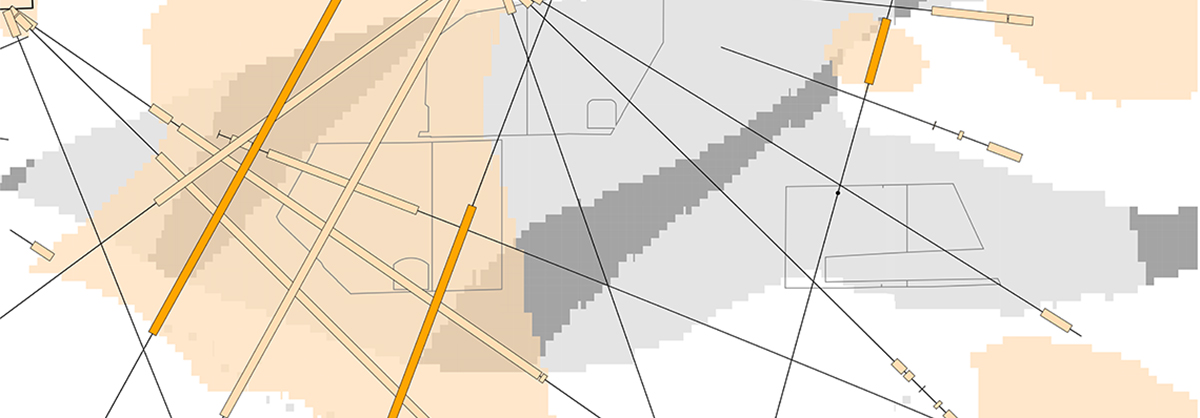September 2023 Issue Index
Quantifying geological uncertainty
A simulation study that tested alternative methods of modelling intrusive pegmatites in a nickel sulphide deposit affirmed the value of Maptek DomainMCF.
The Odysseus Deposit is among the nickel sulphide deposits at the IGO Cosmos Project, approximately 50 km north of Leinster, Western Australia. Discovered by Xstrata Plc, a former owner of Cosmos, Odysseus comprises northern and southern domains.
Currently, Odysseus is undergoing pre-production development, including the installation of a 1 km-deep shaft and materials handling systems, enabling close-spaced infill resource definition drilling and initial mine development activities.
One of the significant challenges in mineral resource estimation (MRE) modelling for the northern Odysseus domain (ODN) has been interpreting the 3D spatial distribution of nickel-barren pegmatites that have intruded and displaced the komatiite orebody.
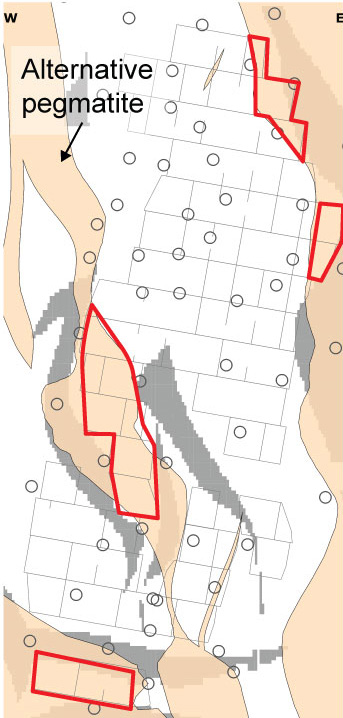
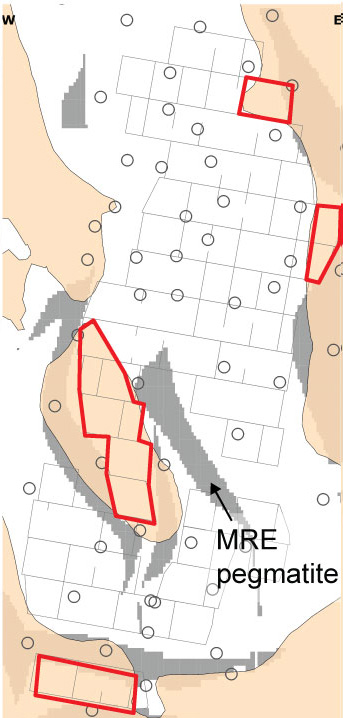
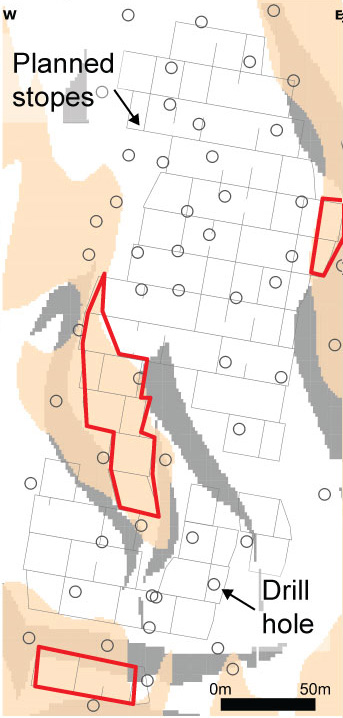
Plan sections of the (L-R) vein, intrusion and Domain MCF models, highlighting in red the planned stopes which are affected by the alternative pegmatite interpretations
Accurate interpretation of pegmatite geometries is crucial for estimating MRE tonnage and making dilution effect assumptions for the ore reserve estimate (ORE).
Additionally, some pegmatites have led to water ingress into underground workings, highlighting the importance of understanding their location for effective mine planning.
To assess geological risk in interpreting pegmatite geometries at ODN, IGO conducted a geostatistical simulation study using a categorical adaptation of the sequential indicator simulation (SIS) method. The SIS simulated data over a 1m × 1m × 1m grid, producing 50 equally probable realisations of the pegmatite geometry.
The study revealed significant variability in interpreting the spatial distribution of the pegmatites at Xstrata’s drill spacing of approximately 40 m. Based on the findings, closer-spaced drilling was recommended before mining, with the goal of achieving an orebody drillhole spacing of 20 m or less to confirm the short-range character of the pegmatites that affect economic mineralisation.
Assessing uncertainty
To assess uncertainty, IGO tested three alternative geological modelling methods using commercially available software systems, comparing them with the bandwidth of uncertainty derived from the categorical SIS results.
The first model used a vein tool algorithm, for modelling narrow and laterally continuous pegmatite bodies. The second alternative used an intrusion implicit algorithm, suitable for modelling the more rounded geometries of large bulbous intrusives.
The third model used Maptek DomainMCF, an application which had shown promising results in modelling various mineralisation geometries at IGO’s Nova Deposit.
In the alternative models, the implicit vein modelling approach revealed relationships between pegmatites and water flow sites, but it was found to be time-consuming and subjective where continuity was uncertain.
The implicit intrusion modelling approach was valuable in challenging continuity, but it had limitations for thin veins.
IGO found that the DomainMCF model was geologically reasonable and consistent with the data and had the added benefit of modelling other lithological units as well as grade trends.
IGO is currently conducting an infill drill program to better define the locations and continuity of the pegmatites. The goal is to quantify uncertainty and assign geological confidence scores to MRE blocks based on the agreement between alternative models and distance-to-data metrics, as well as to provide a probability metric for achieving planned stoping targets based on the pegmatite content.
In the simulation study, IGO generated 50 spatial models of pegmatites using categorical SIS. The precision of each alternative model was then evaluated by comparison with the SIS results using metrics like mean absolute difference (MAD) from the e-type and 90% confidence intervals.
Results
The results indicated that the DomainMCF model performed the best in terms of precision, closely followed by the intrusion model. In contrast, models produced using the vein tool had the highest MAD from the e-type and lower confidence in the estimated pegmatite percentage.
The DomainMCF and intrusion models required minimal human intervention and showed more reliable results. The uncertainty bandwidth in most planned stopes was wide, indicating significant uncertainty in pegmatite content at a drill spacing of 40 m.
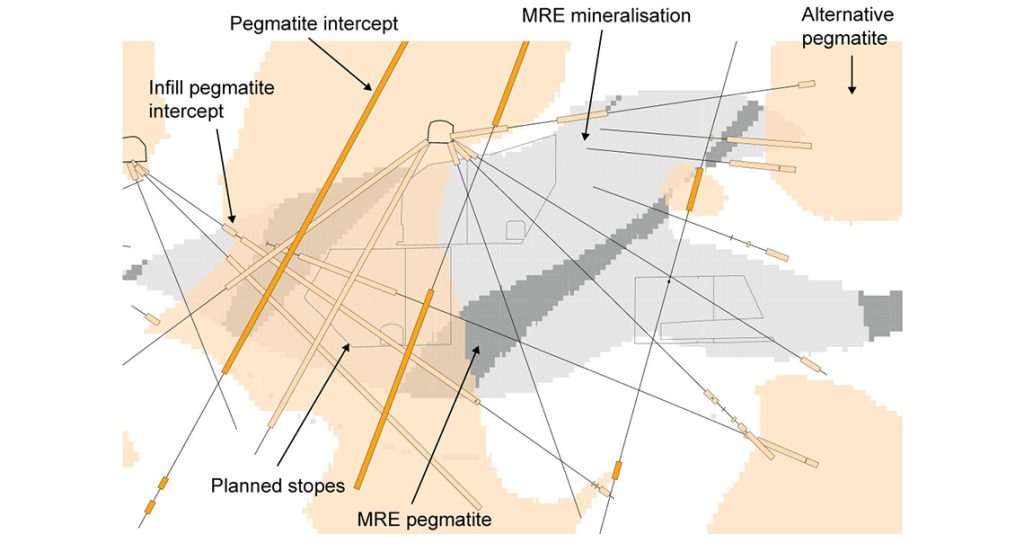
In conclusion, this study employed various methods to address the geological uncertainty associated with pegmatites at Odysseus. The use of alternative modelling methods, including DomainMCF, has proven valuable in gaining a better understanding of the spatial distribution of pegmatites.
The study emphasises the importance of close-spaced drill testing to reduce risks and manage geological uncertainties effectively. Assigning geological confidence scores to MRE blocks based on alternative models will aid in communicating geological uncertainty.
Overall, the study underscores the value of sufficient drill data and effective geological risk management in resource estimation and mine planning.
Thanks to Cathy Barton, Senior Resource Geologist and Mark Murphy, Manager – Geological Services, IGO
From a paper presented at The Australasian Institute of Mining and Metallurgy, Mineral Resource Estimation Conference 2023
| Model | Mean MAD% pegmatite from SIS e-type |
Stope means in 90% confidence |
|---|---|---|
| 2017 MRE | 45.6 | 9 |
| 2022 Vein implicit | 20.9 | 25 |
| 2022 Intrusion implicit | 18.9 | 29 |
| 2022 Artificial intelligence | 17.6 | 31 |
- IGO has trialled various methods to model and interpret the 3D spatial distribution of nickel-barren pegmatites that impact the orebody at their Cosmos Project
- Accurate geometry is crucial for estimating mineral resource tonnage and dilution factors, as well as planning around water ingress into underground workings
- DomainMCF provided the most reliable results and the highest geological confidence score for better understanding geological risk

